- News
- Reviews
- Bikes
- Components
- Bar tape & grips
- Bottom brackets
- Brake & gear cables
- Brake & STI levers
- Brake pads & spares
- Brakes
- Cassettes & freewheels
- Chains
- Chainsets & chainrings
- Derailleurs - front
- Derailleurs - rear
- Forks
- Gear levers & shifters
- Groupsets
- Handlebars & extensions
- Headsets
- Hubs
- Inner tubes
- Pedals
- Quick releases & skewers
- Saddles
- Seatposts
- Stems
- Wheels
- Tyres
- Tubeless valves
- Accessories
- Accessories - misc
- Computer mounts
- Bags
- Bar ends
- Bike bags & cases
- Bottle cages
- Bottles
- Cameras
- Car racks
- Child seats
- Computers
- Glasses
- GPS units
- Helmets
- Lights - front
- Lights - rear
- Lights - sets
- Locks
- Mirrors
- Mudguards
- Racks
- Pumps & CO2 inflators
- Puncture kits
- Reflectives
- Smart watches
- Stands and racks
- Trailers
- Clothing
- Health, fitness and nutrition
- Tools and workshop
- Miscellaneous
- Buyers Guides
- Features
- Forum
- Recommends
- Podcast
review
£7,299.00
VERDICT:
Fast and stiff with great handling but not the smoothest ride
Weight:
7,300g
Contact:
At road.cc every product is thoroughly tested for as long as it takes to get a proper insight into how well it works. Our reviewers are experienced cyclists that we trust to be objective. While we strive to ensure that opinions expressed are backed up by facts, reviews are by their nature an informed opinion, not a definitive verdict. We don't intentionally try to break anything (except locks) but we do try to look for weak points in any design. The overall score is not just an average of the other scores: it reflects both a product's function and value – with value determined by how a product compares with items of similar spec, quality, and price.
What the road.cc scores meanGood scores are more common than bad, because fortunately good products are more common than bad.
- Exceptional
- Excellent
- Very Good
- Good
- Quite good
- Average
- Not so good
- Poor
- Bad
- Appalling
Canadian company Cervélo has produced a few hits since it launched in 1995. This, its all-new R5 Disc, has all the makings of a superbike, being fast, stiff and responsive, with great handling, but it does have a firm ride – the only blemish on an otherwise fine package.
- Pros: Fast, light, stiff, great handling, looks good
- Cons: Ride is quite firm, not the smoothest on rough roads
My first and only ever ride on the previous R5 was at a Garmin launch somewhere in Austria, and culminated in trying to keep up with Bahrain–Merida rider Heinrich Haussler up a ridiculously big mountain. It didn't end well. The bike, however, left quite an impression: incredibly lightweight, very flickable and ace handling. It was a stellar bike.
> Find your nearest dealer here
A lot of very good bikes have come along since then, but the changes made to the new R5 ensure it can keep good company with the likes of the Trek Emonda and Specialized Tarmac. Like those bikes, the R5 is an 'all-rounder' intended to excel in all situations, from the slopes of Alpe d'Huez to the cobbles of Paris-Roubaix.
Ride and handling
The geometry provides a riding position that I got on well with. It might be lower at the front but because the bottom bracket has also been lowered, it doesn't feel extremely aggressive. The lower BB gives the R5 a feeling that you're sat 'in' the bike rather than perched on top, good for a low centre of gravity, and the position is very comfortable on longer rides.
It also provides a good balance for all-round riding and racing, being stable when descending and carving corners at high speeds, while the reduced trail ensures the steering feels light, giving the R5 a lively and agile ride. It is planted at high speeds, and descending is an area where it really shines. It flies downhill.
The frame is clearly very stiff. Cervélo makes lots of claims about how stiff it is, and in the real world it resists flexing under my most powerful sprints or surging up steep climbs. Cervélo's own handlebar and stem are also abundantly stiff; I couldn't detect any flex from the drops at all.
Comfort hasn't always been a concern with race bikes, but it is increasingly a consideration in the design process. The likes of the Emonda and Tarmac SL6 have shown that race bikes can be comfortable without sacrificing the core performance-focused traits, so it's a bit of a disappointment that the R5 Disc doesn't handle my local rough roads as well as those two rivals.
For the most part it's reasonably smooth, but get onto a patch of broken tarmac and it struggles to soak up the vibrations and sends the shocks through to the contact points. The front end is markedly firmer than the rear, suggesting the D-shaped seatpost is minimising some of the chatter.
That's with the 25mm Continental tyres inflated to about 85psi. Out of curiosity, I swapped on some 28mm Pirelli tyres and the difference was immediately noticeable: it was much smoother with the wider tyres. So if you buy an R5, maybe invest in some wider tyres.
The R5 is available with rim or disc brakes, but given the superior braking performance of the SRAM eTap brakes, I know where my money would go. There was no downside, no rubbing under power or screeching at high speeds, just calm and authoritative braking. Yes, I'm a fan; I know they are not without their faults sometimes, but when they work well they are ace.
Frame details
We don't often talk about aesthetics because it's such a subjective thing, but I have to say the Cervélo R5 looks good. The understated black with a flash of yellow in various places, that massive down tube... it just looks right – fast and purposeful.
Racing and performance are in the company's DNA. It has only ever been interested in making the best road race bikes it can, and has never tried to produce a wide range of models. You won't find any mountain bikes or kids bike in its lineup, it's all about road race bikes, a fact reflected by the considerable success it's enjoyed with the likes of pro teams CSC, Garmin-Sharp, its own Test-Team and more recently Dimension Data.
That shows in the newly updated R5, which has been updated following feedback from the pros. The goal wasn't to chase weight, as has often been the case in Cervélo's history, but to focus on stiffness, handling and fit.
The most significant change is an 8mm shorter head tube, which along with a 2mm longer reach provides a suitably more aggressive position compared with the more laid back R3. The bottom bracket has also been lowered and the chainstays stretched to increase the wheelbase – two changes aimed at providing more stability.
Stiffness was a big goal with the new R5 too, and the key to improving the levels is the new Squoval Max down tube, resulting in a claimed increase in stiffness of 18% at the head tube and 26% at the bottom bracket. The new down tube profile is also intended to improve aerodynamics, and the same profile is used on the new fork blades.
Available with rim or disc brakes, the latter has clearance for up to 28mm tyres which will provide extra smoothness if you want it. Also aimed at improving comfort is the D-shaped seatpost and internal clamp, which increases the amount of seatpost extending out of the frame for a little more flex.
The original R5 was developed off the back of the made-in-California RCA project, which developed 650-700g frames. The new R5 isn't as light as it used to be, Cervélo claiming 831g for the disc frame. Add another 18g for the rim brake version – yes, the disc frame is lighter. The important message that Cervélo is keen to get across is that the stiffness-to-weight ratio has shot up with this new R5.
The R5 Disc uses the now common 12mm thru-axles but instead of regular screw-type axles, Cervélo has used the Rapid Axle Technology (RAT for short) standard developed by sister company Focus. On the end of the axle is a T-bar and you simply push the axle into place and twist it 90 degrees before closing the lever. It's a very simple design and saves a lot of time compared with regular thru-axles, but it does take a few goes to familiarise yourself with it.
Build
Costing £7,299, our test bike is well equipped with top components befitting such a bike, centring around SRAM's flagship Red eTap groupset with wireless shifting and hydraulic disc brakes. It's a lovely groupset to use; I'm a real fan of the shifting layout compared to Shimano and Campagnolo, but I do wish the hoods were a bit smaller.
The SRAM chainset is power ready, you simply need to buy a Quarq power meter spider and swap it for the spider on the chainset. They go for about £600 and that's a fair bit cheaper than buying a whole new crankset so it is a good approach, but really – couldn't Cervélo just have fitted a power meter on a bike of this price, or just upped the price a little bit to £7,500 to include one?
Zipp's deep-section 302s are a new wheelset from the US brand. They forgo the company's iconic dimples to keep the price down compared to its top-end wheels. They feature a 45mm-deep rim with Sapim CX-Spring J-bend aero spokes, brass nipples and smart looking 76D/176D hubs using the Center Lock standard for the disc rotors. They're not tubeless-compatible, which is a shame.
In use, they feel very fast. They also feel very stiff, gifting the R5 Disc a very agile and alert feeling when slinging it through bends. Their claimed 1,695g weight is reasonable and certainly not enough to hold you back on the climbs, but there are lighter wheels on the market.
In the pursuit of aerodynamics, Cervélo has fitted its own new two-piece carbon fibre aero handlebar and stem. The bar has a teardrop profile along the tops and the stem is configured to be able to route gear cables or wires inside. It's not the same for the hydraulic hoses, though, they are externally routed from the bar to the frame, and then internally routed.
I like the shape of the handlebar, although the slight curve does mean a computer out-front mount is slightly wonky, which is annoying. It's nice in the drops, though, and the aero tops are a comfortable place to plant your hands when taking in the scenery.
The only niggle is the fitting of the mid-range Continental tyres. They're not bad, but they're not as supple and don't feel as fast as Continental's more expensive tyres, which is what you'd expect to see on a bike of this price.
Rivals
The Cervélo R5 Disc goes up against the likes of the Specialized Tarmac SL6 Disc, Trek Emonda SLR Disc, Canyon Ultimate CF SLX Disc and Giant TCR Advanced Disc, to name a few key contenders. The Cervélo holds its head up high against such stellar competition, with all the performance any racing cyclist desires. It's not quite as flawless as the highly impressive Tarmac in my opinion, and it's not as light as the stunning Emonda SLR Disc, which is 6.7kg with Dura-Ace and disc brakes.
Conclusion
The new R5 is better than the previous bike, with changes that reflect the modern requirements of an all-round race bike. But it's up against some incredibly tough competition and I'm not sure Cervélo commands the sort of attention it used to enjoy back in the mid-2000s when the R3 was perhaps the most desirable race bike out there.
> Buyer's Guide: 14 of 2018’s hottest disc brake-equipped race bikes
It's certainly still fast, responsive, agile, light and reasonably comfortable, with an aero boost as well, and is certainly a commendable alternative to some of the rivals mentioned above.
Verdict
Fast and stiff with great handling but not the smoothest ride
road.cc test report
Make and model: Cervélo R5 Disc
Size tested: 54cm
About the bike
List the components used to build up the bike.
FRAME: Cervelo All-Carbon, R5 frame for disc
FORK: Cervelo All-Carbon, tapered R5 fork for disc
HEADSET: FSA IS2 1-1/8 x 1-1/2"
STEM: Cervelo Carbon Stem
HANDLEBARS: Cervelo ABO6
FRONT BRAKE: SRAM RED HRD
REAR BRAKE: SRAM RED HRD
BRAKE LEVERS: SRAM RED
FRONT DERAILLEUR: SRAM RED eTap 11-speed
REAR DERAILLEUR: SRAM RED eTap 11-speed
SHIFT LEVERS: SRAM Red eTap, 11-speed
CASSETTE: SRAM XG 1190 11-28T
CHAIN: SRAM RED 22
CRANKSET: SRAM RED 52/36
BOTTOM BRACKET: SRAM PF30
PEDALS: NA
FRONT WHEEL: Zipp 302, clincher
REAR WHEEL: Zipp 302, clincher
FRONT TYRE: Continental Grand Prix 700 x 25c
REAR TYRE: Continental Grand Prix 700 x 25c
SADDLE: Fizik Antares R5
SEATPOST: Cervelo Carbon SP18
Tell us what the bike is for and who it's aimed at. What do the manufacturers say about it? How does that compare to your own feelings about the bike?
Cervelo says, "Whether you're attacking epic climbs or speeding over cobblestones, the R5 Disc will help you survive, thrive and dominate. This ultra-lightweight race machine sets new benchmarks for performance, usability and confidence-boosting control thanks to integrated disc-brake technology, a new pro fit, unrivalled stiffness, stable and responsive handling, and myriad aero enhancements."
Frame and fork
Overall rating for frame and fork
8/10
Tell us about the build quality and finish of the frame and fork?
Very good.
Tell us about the materials used in the frame and fork?
All carbon.
Tell us about the geometry of the frame and fork?
Typical of a race bike with a focus on providing razor-sharp handling.
How was the bike in terms of height and reach? How did it compare to other bikes of the same stated size?
I found the fit very comfortable and didn't need to make any changes.
Riding the bike
Was the bike comfortable to ride? Tell us how you felt about the ride quality.
In terms of fit and reach yes it was comfortable, but it's not the smoothest ride on rough roads.
Did the bike feel stiff in the right places? Did any part of the bike feel too stiff or too flexible?
Very stiff through the handlebar and pedals.
How did the bike transfer power? Did it feel efficient?
No flex could be detected at all.
Was there any toe-clip overlap with the front wheel? If so was it a problem?
None.
How would you describe the steering? Was it lively neutral or unresponsive? Fairly relaxed for a race bike.
Tell us some more about the handling. How did the bike feel overall? Did it do particular things well or badly?
Quite steady and relaxed for a race bike, not too twitchy at high-speed.
Which components had the most effect (good or bad) on the bike's comfort? would you recommend any changes?
I'd swap the tyres for something higher quality, and consider going wider for extra comfort
Which components had the most effect (good or bad) on the bike's stiffness? would you recommend any changes?
The handlebar won't be for everyone, and the stem is no looker either.
Which components had the most effect (good or bad) on the bike's efficiency? would you recommend any changes?
Not really no.
Rate the bike for efficiency of power transfer:
8/10
Rate the bike for acceleration:
8/10
Rate the bike for sprinting:
8/10
Rate the bike for high speed stability:
8/10
Rate the bike for cruising speed stability:
8/10
Rate the bike for low speed stability:
7/10
Rate the bike for flat cornering:
7/10
Rate the bike for cornering on descents:
8/10
Rate the bike for climbing:
8/10
The drivetrain
Rate the drivetrain for performance:
8/10
Rate the drivetrain for durability:
8/10
Rate the drivetrain for weight:
8/10
Rate the drivetrain for value:
7/10
Wheels and tyres
Rate the wheels for performance:
8/10
Rate the wheels for durability:
8/10
Rate the wheels for weight:
6/10
Rate the wheels for comfort:
7/10
Rate the wheels for value:
7/10
Rate the tyres for performance:
5/10
Rate the tyres for durability:
6/10
Rate the tyres for weight:
6/10
Rate the tyres for comfort:
5/10
Rate the tyres for value:
6/10
Controls
Rate the controls for performance:
7/10
Rate the controls for durability:
7/10
Rate the controls for weight:
7/10
Rate the controls for comfort:
7/10
Rate the controls for value:
7/10
Your summary
Did you enjoy riding the bike? Yes
Would you consider buying the bike? Yes
Would you recommend the bike to a friend? Yes
Rate the bike overall for performance:
8/10
Rate the bike overall for value:
7/10
Use this box to explain your overall score
A well-rounded race and high-performance bike with good handling and poise, with huge stiffness for sprinting and climbing, but it lacks the smoothness that some of its rivals offer. If you can overlook that, it's a very capable bike and there's a lot to like.
About the tester
Age: 31
I usually ride: My best bike is:
I've been riding for: 10-20 years I ride: Every day I would class myself as: Expert
I regularly do the following types of riding: road racing, time trialling, cyclo cross, commuting, touring, mountain biking
David worked on the road.cc tech team from 2012-2020. Previously he was editor of Bikemagic.com and before that staff writer at RCUK. He's a seasoned cyclist of all disciplines, from road to mountain biking, touring to cyclo-cross, he only wishes he had time to ride them all. He's mildly competitive, though he'll never admit it, and is a frequent road racer but is too lazy to do really well. He currently resides in the Cotswolds, and you can now find him over on his own YouTube channel David Arthur - Just Ride Bikes.
Latest Comments
- aramaerospace 2 sec ago
Hi, my name is Aram. I'm the lead engineer behind this power meter and a co-founder of BikeOn, the company developing it. I'm happy to answer any...
- Geoff H 1 hour 32 min ago
I was really enjoying the article until I came to the price!
- OldRidgeback 2 hours 25 min ago
I have a very old MTB (guess what make) that I'll happily leave locked at the train station or shops or whatever. The fairly new Trek MTB or...
- TheBillder 3 hours 59 min ago
Dualling that stretch of the A7 will allow hard-pressed motorists to travel very slightly faster between the rock that is the Sherriffhall...
- BikingBud 4 hours 7 min ago
I refer to being an engineer only to emphasise my consideration of the logical approach that should be applied in the justice system, rather than...
- David9694 5 hours 38 min ago
Parking fail as car left teetering on top of stone wall Oh dear https://www.devonlive.com/news/local-news/parking-fail-car-left-teeterin...
- jaymack 6 hours 56 min ago
We must be related!
- The_Ewan 8 hours 26 min ago
But why worry if a few people do? It's just not a big deal....
- Tom_77 9 hours 30 min ago
Tempted to get him a sweary birthday cake like in The Thick Of It....
- Bigtwin 9 hours 58 min ago
Didn't happen did it? They came into my shop a couple of years back and said it was "on the way", but never heard anything more.




































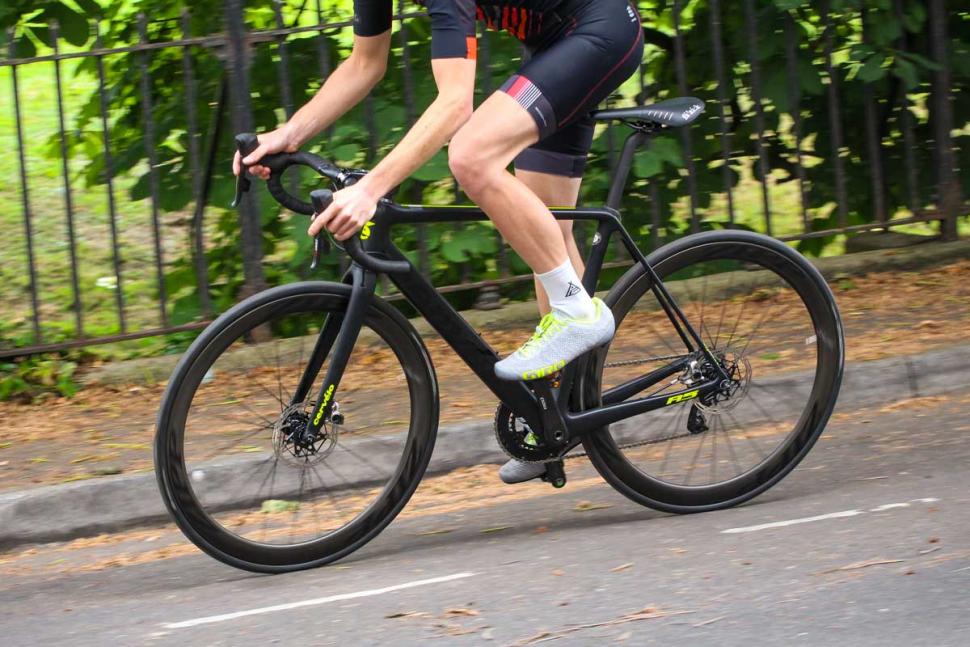
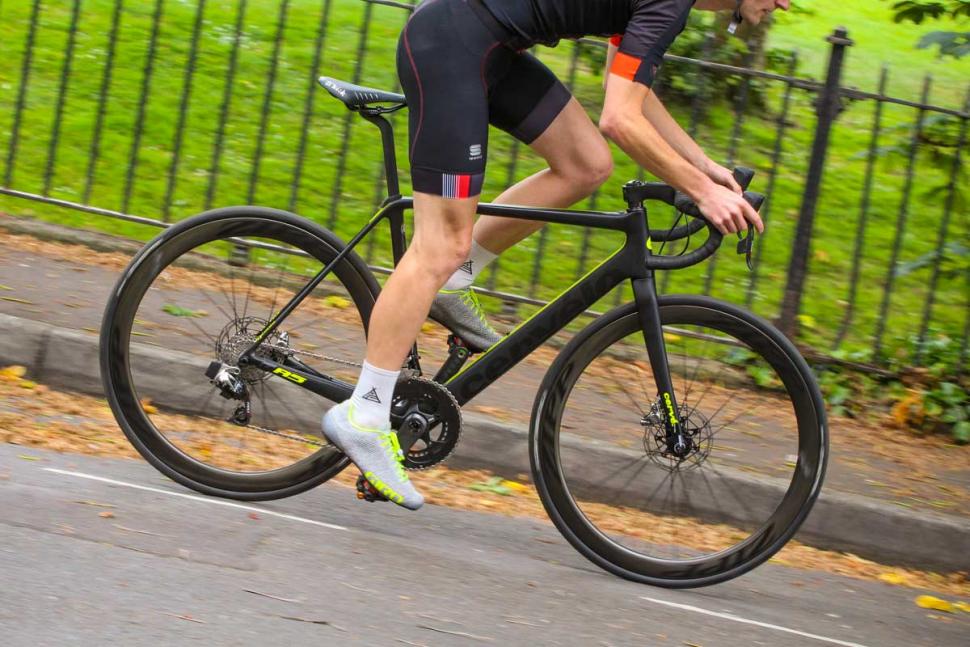
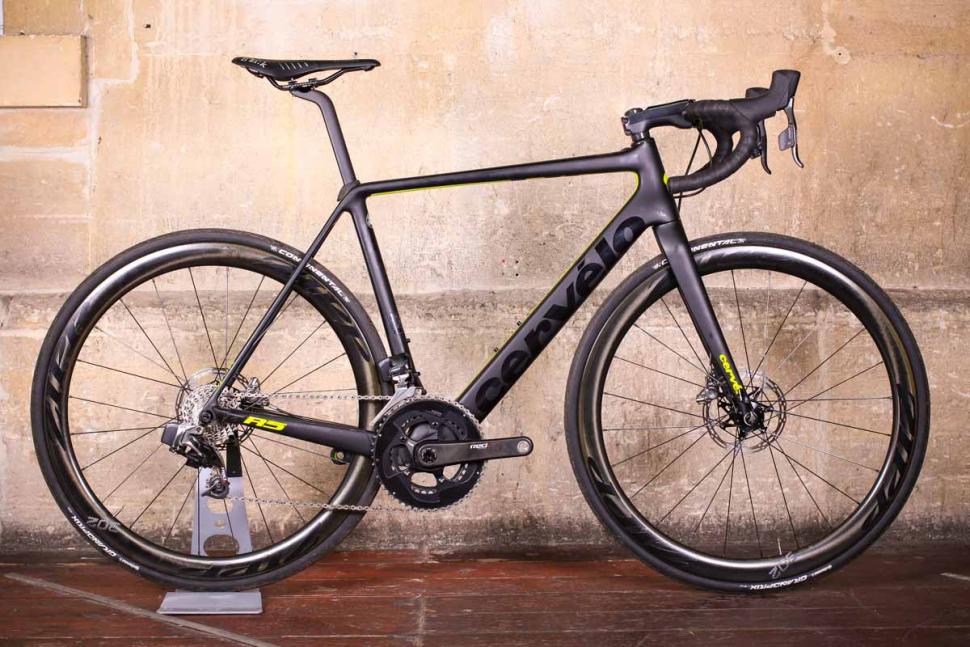
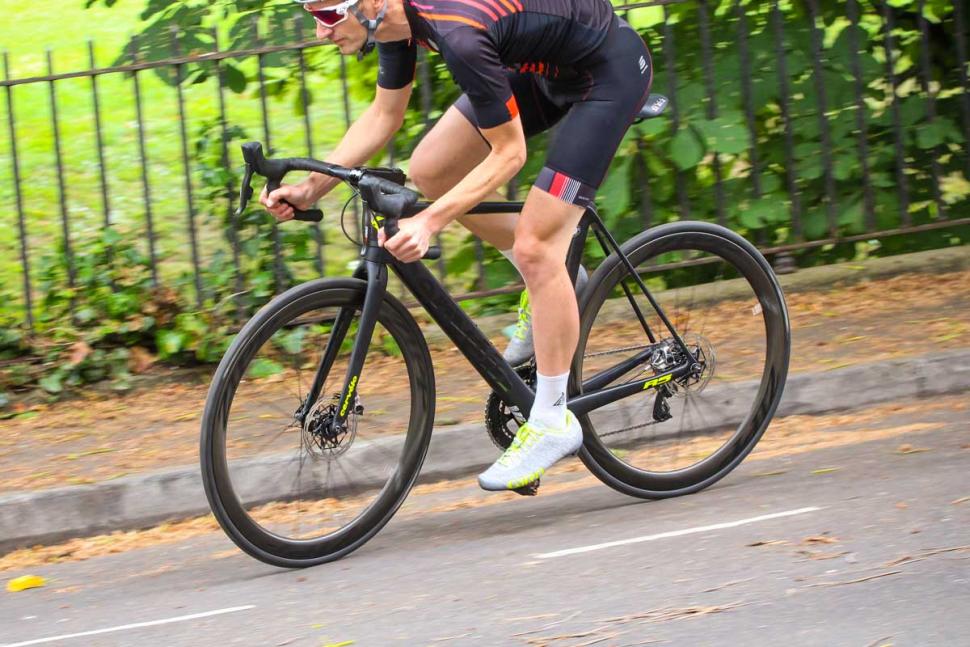


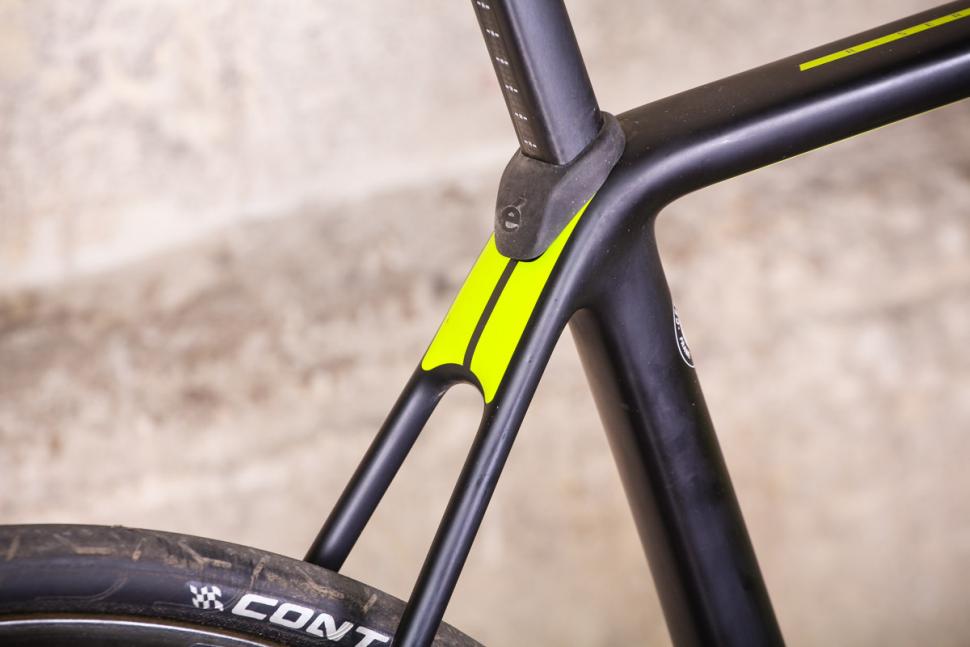

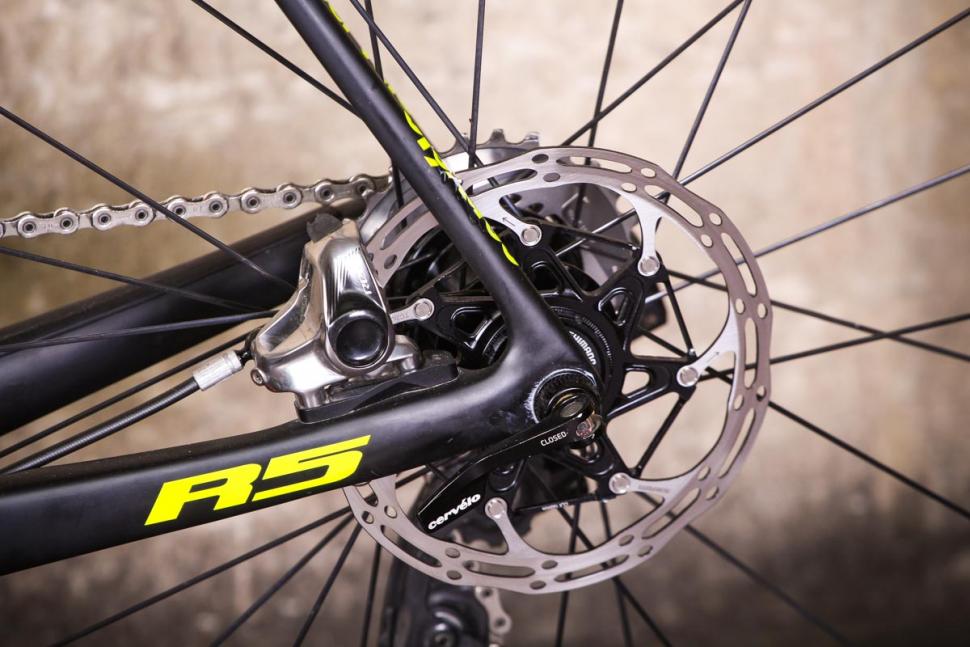
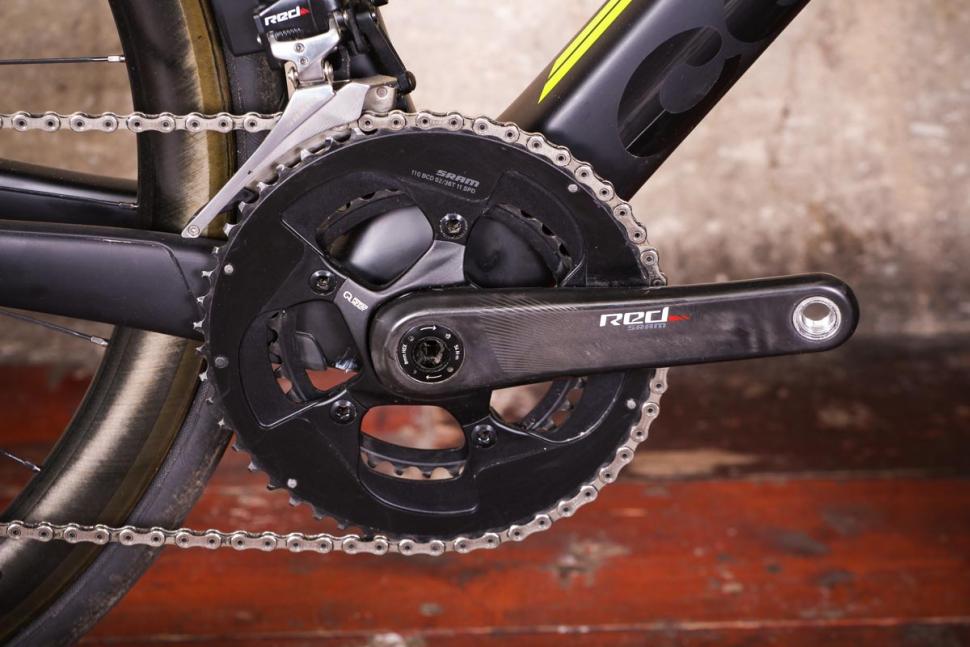
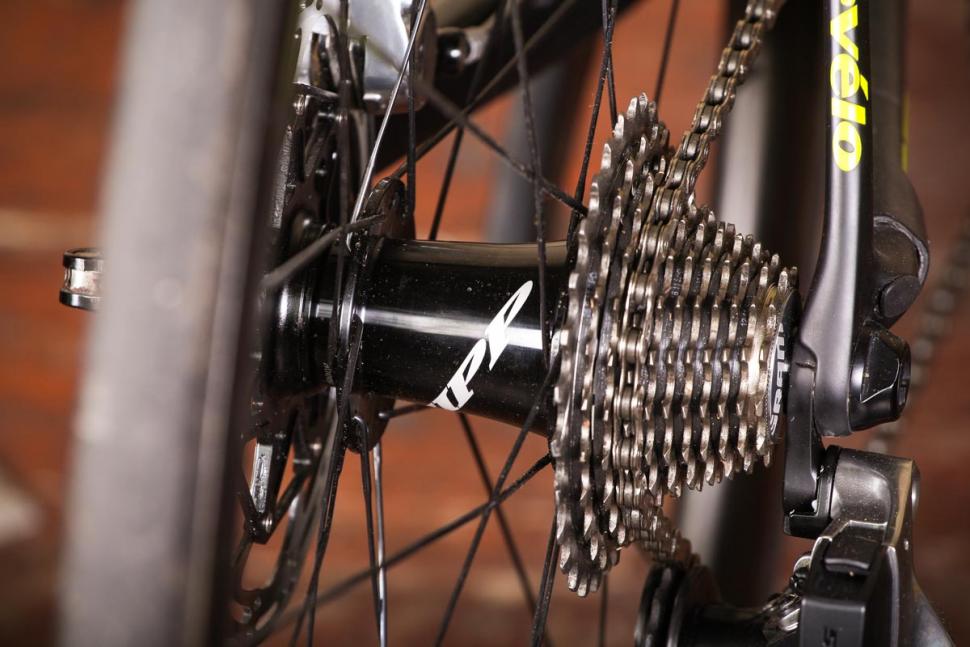
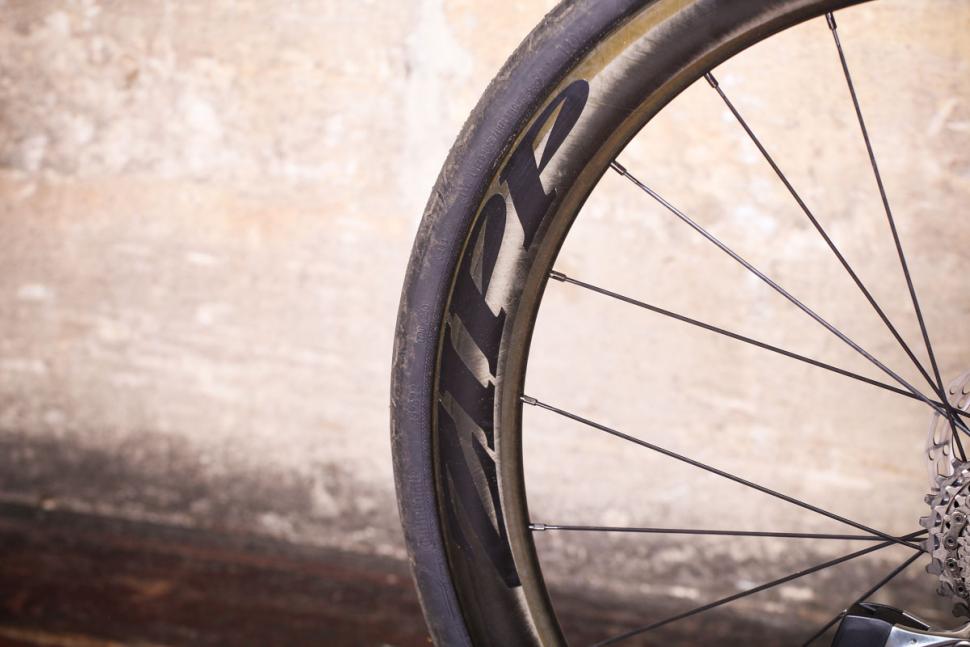
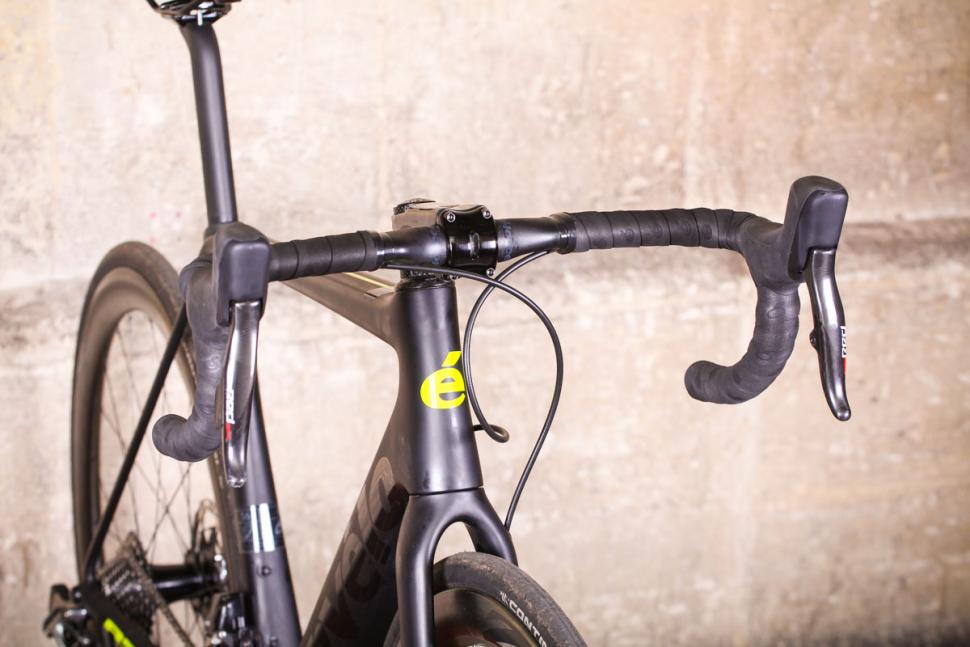





Add new comment
3 comments
I agree, a fantastic bike and also not really appropriate judging it with the stock tyres which would be immediately changed by any sensible person purchasing it (the 2019 model comes with GP4000s tyres interrestingly).
I've ridden one and the geometry is much more aggressive than it was previously and the better for it (personal opinion), although I still think the reach could be longer.
Spec-wise, I'd go for the DA Di2 version of this eTap version for the same price.
Overall, for me this has much more appeal than a Spesh or a Trek.
"2mm longer reach", that's like slightly thicker bar tape !
0 comments so far for what I suspect a fantastic bike. Shame! Either way, harshness comment might be not so well founded, given that tyres are recognised as the predominant reason. It's great to see that geometry has changed to more racier affair (lower stack and longer reach). Still, I can't help notice few niggles:
-Spec: for the price, Zipp 302, Conti GP? Really?
-Fork height - one pic shows clearly a massive gap between the tyre and the crown.
I would go for frameset option clearly, with such prices.